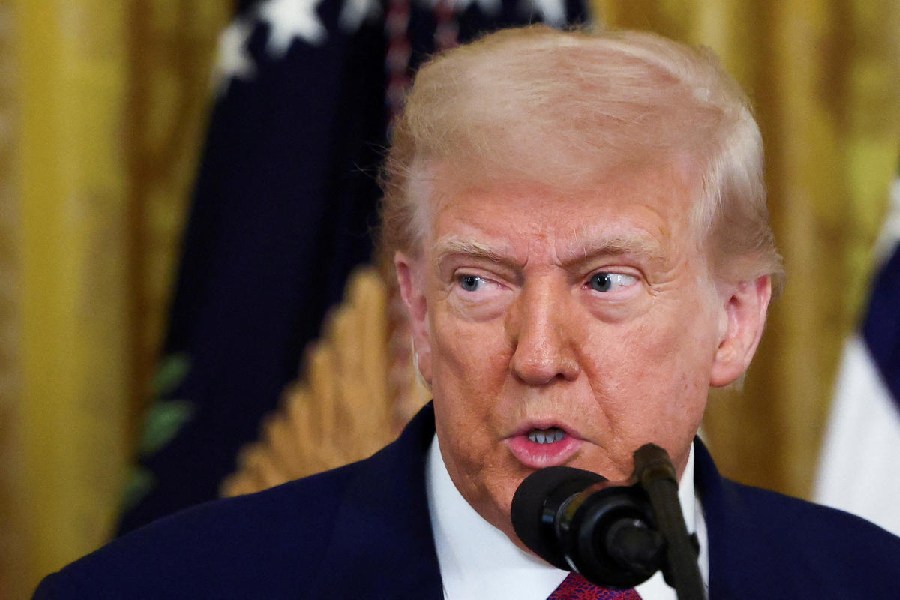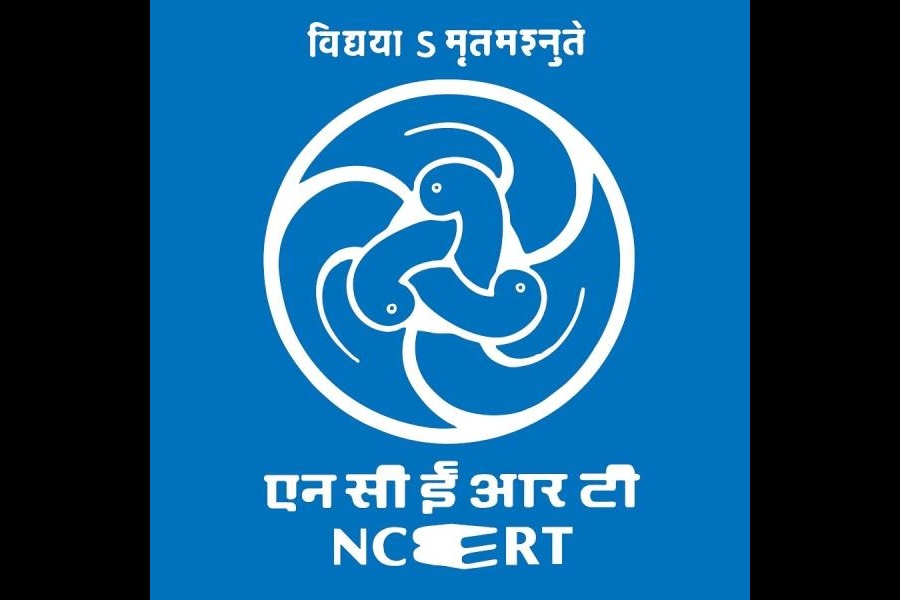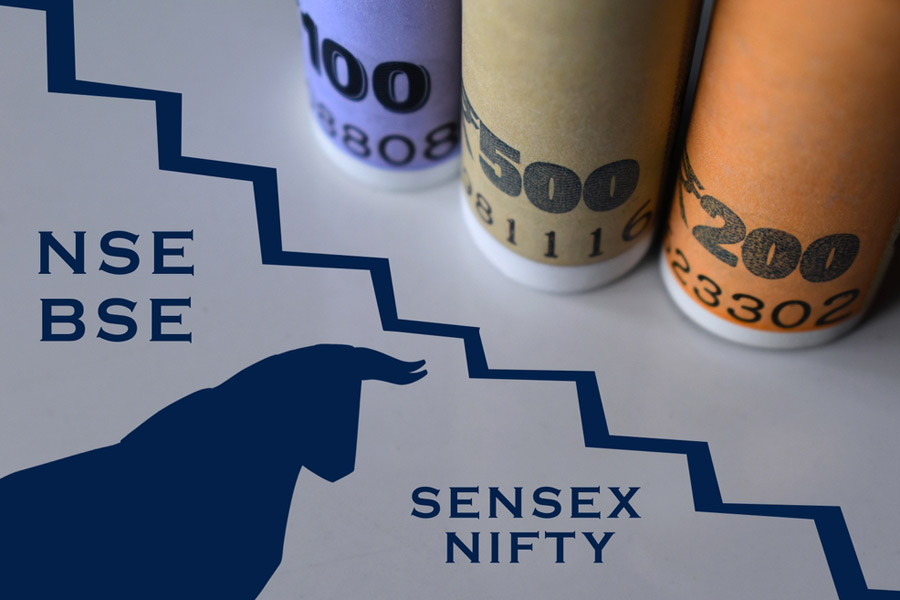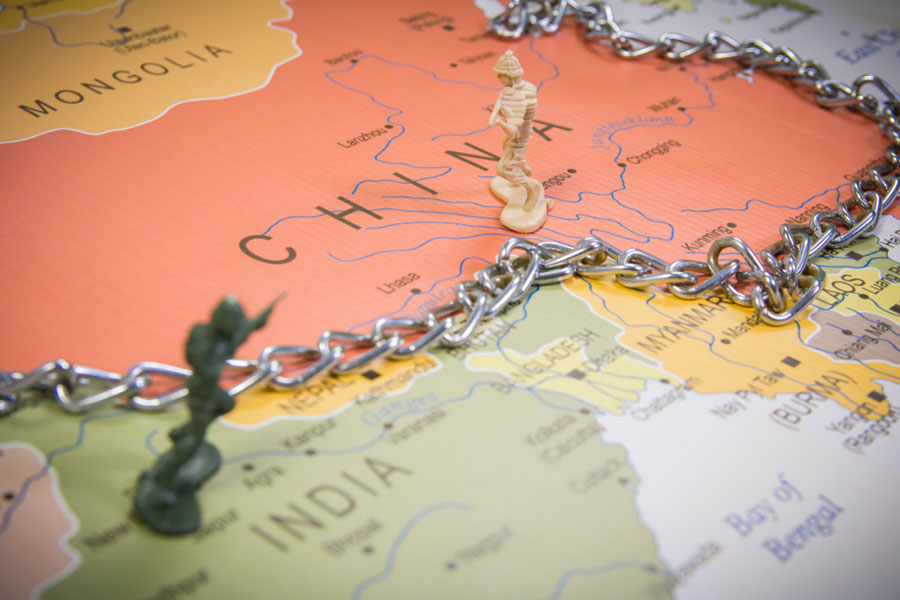Bitter truth
Sir — Somnath Chatterjee has done a great job by unmasking Prakash Karat in his memoirs (“Chatterjee churn in CPM,” July 26). Karat, the general secretary of the Communist Party of India (Marxist), has spelled doom for his own party by taking erroneous decisions and by turning a blind eye to corruption. If a party member were to raise his voice against corrupt practices in the CPI(M), he is likely to be censored severely. When the Central Bureau of Investigation accused the party’s Kerala secretary, Pinarayi Vijayan, of being involved in a graft case, the chief minister, V.S. Achuthanandan, had rightly demanded Vijayan’s removal from his post. But Karat continues to protect Vijayan who remains unscathed.
Karat’s other decision — Chatterjee’s unfair ouster from the party —had shocked ordinary people. Voters had also rejected Karat’s efforts to forge close ties with third front leaders like Mayavati and J. Jayalalithaa. Unfortunately, party leaders in Bengal have become puppets in Karat’s hands. They are unlikely to rebel against the party chief even though they disapprove of his actions.
The release of Chatterjee’s book on August 21 may drag the CPI(M) down considerably. Chatterjee deserves to be congratulated for his endeavour to expose the wrongs within the party.
Yours faithfully,
Diptendu Chakraborty,
Toronto, Canada
Sir — One wonders whether Somnath Chatterjee’s book deserves so much media attention. The CPI(M)’s popularity has waned not just because of Karat’s flawed approach to certain national issues, but also because the party itself has lost touch with the masses. It is wrong to accuse Karat of being single-handedly responsible for the party’s decline.
Something else needs to be pointed out as well. In all fairness, Chatterjee’s book should not be released by the prime minister as it deals with issues related to the internal squabbles of the CPI(M). By gracing the occasion, the prime minister will compromise the dignity of his office.
Yours faithfully,
A.S. Mehta, Calcutta
Sir — Jyoti Basu was an obedient soldier of his party. Although he knew that his ideas could mould the party in a positive way, he failed to change the rigid mentality of the party bosses. If the party had agreed, Basu could have become the first Bengali prime minister of India. But individualism has always been suppressed in the CPI (M) to protect the party’s interests. This only goes to show that in democratic India, communist parties continue to be run on autocratic lines. Somnath Chatterjee can be considered a pioneer because he prioritized his constitutional responsibilities over the party’s diktat. Can the CPI(M) consider Chatterjee to be a burden for this reason? Ideally, a political party should have space for individualism and encourage new ideas. But it seems that Karat is afraid to confront new ideas as they might jeopardize his position.
Throughout Karat’s tenure, the CPI(M) has continued to lose ground in national politics, and has also lost its hold over West Bengal. But Karat has refused to acknowledge his mistakes and take responsibility for the mess he has created. All he has done is bask in the glory of his power and position.
Yours faithfully,
Uttam Kumar Bhowmik, Tamluk
Good sign
Sir — D. Udaya Kumar of the Industrial Design Centre of the Indian Institutes of Technology, Mumbai, should be thanked for giving the Indian rupee a new symbol. The Union cabinet, too, should be congratulated for adopting Kumar’s creation (“Honey, our money has an ID”, July 16). The symbol will enable the rupee to join a select club of international currencies. Apart from giving the rupee a new icon, the Indian government should also take concrete measures to create more value for every rupee spent by the aam admi. One sincerely hopes that some political party will not create a ruckus over the selection of the symbol and call another Bharat bandh.
Yours faithfully,
N. Nagarajan, Secunderabad
Sir — The newspapers are full of reports on the Indian rupee gaining a new “symbol”, as The Telegraph put it. But more than an identity, what the rupee needs is standardization in terms of the shapes and sizes of the coins in circulation.
There is hardly any difference in the sizes of the one rupee and the two rupee coins, and there are two kinds of five rupee coins in circulation. Those who are not literate often find it difficult to read the value of the currency on the coins. As for the literate with poor eyesight, it is often a challenge to make out what is embossed on the coins. Earlier, there used to be different sizes and shapes for different coins, so that people could make out the value of the coins easily. It is time the government did something about this particular problem.
Yours faithfully,
Kalyansri Dasgupta, Calcutta
Sir — The rupee symbol, like those of the dollar and the sterling pound, will look good in the international market. But the real test is to make the rupee as strong as the dollar or the pound. Very few currencies have symbols that are recognized internationally. Therefore, it is truly satisfying to have an emblem representing the rupee. The symbol also has many other uses. It will save a lot of time as the word, rupee, will not have to be typed every time one needs to mention the currency. Computer keyboards do not have the rupee symbol. Hopefully, the necessary change will be made soon.
Yours faithfully,
Mahesh Kumar, New Delhi










